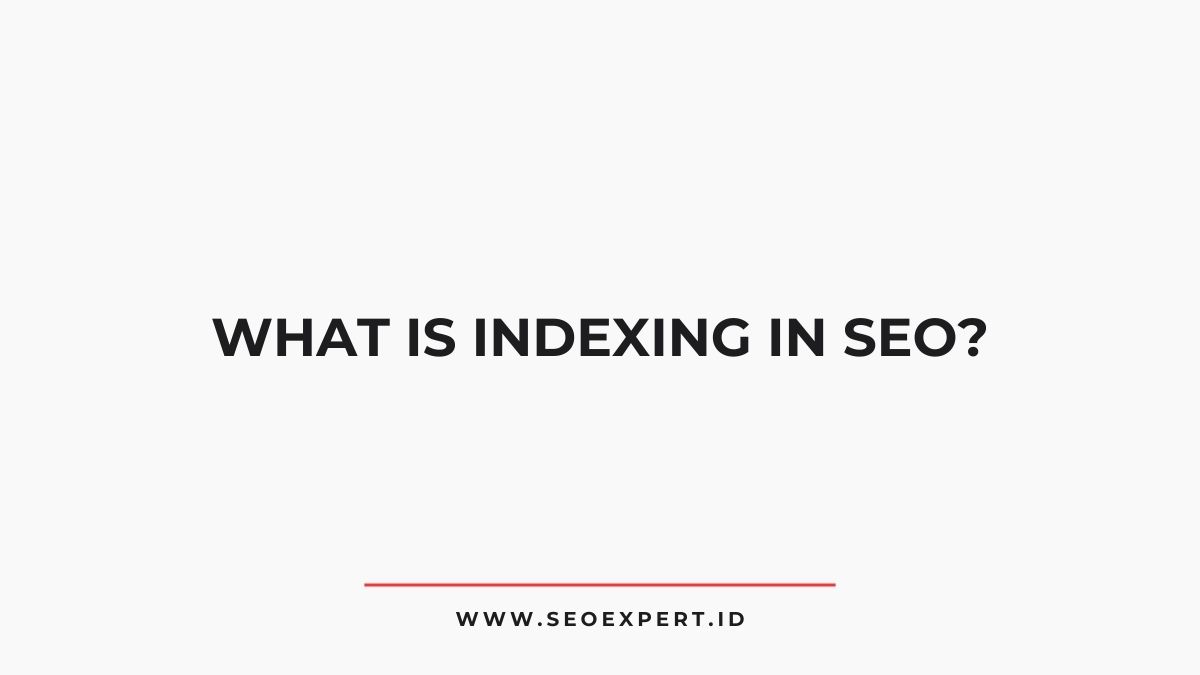Conversion rate in SEO measures the percentage of website visitors who complete specific actions, such as making a purchase or signing up for a newsletter.
Namecheap
Find your perfect brand domain and claim it now to boost your SEO. Start from as low as $5 per year.
This metric is essential for evaluating user engagement and the efficacy of digital marketing strategies.
A high conversion rate reflects successful user experiences and trust, while a low rate may indicate underlying issues.
Understanding the factors that influence this rate can enhance SEO efforts and improve overall marketing performance. Additional insights await those exploring further.
TL;DR
Hide- Conversion rate in SEO measures the percentage of website visitors completing desired actions, indicating user engagement and effectiveness of marketing strategies.
- A high conversion rate reflects successful user trust and satisfaction, while a low rate may signal issues with user experience or content alignment.
- Tracking conversion rates helps evaluate SEO effectiveness, guiding resource allocation and improving website credibility in search engine rankings.
- Tools like Google Analytics and A/B testing provide insights into user behavior, enabling optimization of content and design for better conversion outcomes.
- Effective call-to-action prompts and quality content are crucial factors influencing conversion rates, helping to convert visitors into leads or sales.
Understanding Conversion Rate: Definition and Importance
Conversion rate serves as a critical metric in the domain of search engine optimization (SEO), representing the percentage of users who complete a desired action after engaging with a website.
Understanding this metric is essential for evaluating the effectiveness of online strategies.
A high conversion rate indicates that a website successfully meets user needs, fostering trust and encouraging repeat visits. In contrast, a low conversion rate may signal underlying issues, such as poor user experience or misleading content.
The Role of Conversion Rate in SEO
The conversion rate serves as a critical metric in evaluating the effectiveness of SEO strategies.
By defining conversion rate and understanding its significance, marketers can better align their tactics to optimize user engagement and drive desired actions.
Tracking and analyzing this metric allows for informed adjustments that enhance overall search engine performance and profitability.
Defining Conversion Rate
Measuring success in digital marketing hinges greatly on understanding the concept of conversion rate.
This metric quantifies the percentage of website visitors who complete a desired action, such as making a purchase, signing up for a newsletter, or filling out a contact form.
To calculate conversion rate, one divides the total number of conversions by the total number of visitors, then multiplies by 100.
A higher conversion rate indicates greater effectiveness in persuading visitors to take action, reflecting the quality of traffic and user engagement.
Consequently, defining conversion rate is not merely an academic exercise; it serves as a critical benchmark for evaluating the success of SEO strategies and overall marketing efforts, ensuring that resources are allocated efficiently and effectively.
Importance for SEO
Understanding the role of conversion rate in SEO is essential for developing effective digital marketing strategies, as it directly influences the evaluation of website performance.
A high conversion rate indicates that a website is successfully engaging its audience, thereby enhancing its credibility and trustworthiness.
This metric serves as a crucial indicator of user intent and satisfaction, guiding SEO efforts to align with consumer behavior.
Additionally, search engines increasingly prioritize user experience; a robust conversion rate can signal to algorithms that a website offers valuable content, potentially improving its ranking.
Tracking and Analysis
A thorough approach to tracking and analyzing conversion rates is essential for optimizing SEO strategies.
By employing tools such as Google Analytics, businesses can monitor key metrics that indicate user engagement and conversion patterns.
This data allows for an extensive understanding of which pages or keywords drive conversions, enabling a strategic allocation of resources.
Regularly evaluating these metrics can reveal trends, such as seasonal fluctuations or shifts in consumer behavior, guiding adjustments to content and outreach efforts.
Additionally, A/B testing provides insights into which elements resonate most with users, fostering informed decisions.
Ultimately, a meticulous analysis of conversion rates not only enhances SEO effectiveness but also contributes to a safer, more efficient online presence, ensuring that marketing efforts align with user expectations.
Key Factors Influencing Conversion Rate
Conversion rates are significantly influenced by a myriad of factors that can either enhance or hinder a website’s ability to turn visitors into customers.
Understanding these elements is essential for optimizing performance.
Key aspects include website design, user experience, content quality, trust signals, and call-to-action effectiveness.
| Factor | Description |
|---|---|
| Website Design | Visually appealing and intuitive |
| User Experience | Easy navigation and fast loading |
| Content Quality | Relevant, informative, and engaging |
| Trust Signals | SSL certificates, reviews, testimonials |
| Call-to-Action | Clear, compelling prompts |
Types of Conversions in Digital Marketing
In the domain of digital marketing, conversions are pivotal metrics that signal the effectiveness of campaigns.
Two primary types—lead generation conversions and sales conversions—serve distinct but complementary purposes.
Lead Generation Conversions
Numerous businesses recognize lead generation conversions as a critical component of their digital marketing strategies.
These conversions focus on transforming potential customers into qualified leads, thereby enhancing the sales funnel’s efficiency.
Effective lead generation strategies can greatly impact business growth and sustainability.
| Lead Generation Method | Conversion Rate Potential |
|---|---|
| Email Marketing | High |
| Social Media Campaigns | Moderate |
| Webinars | High |
| Content Marketing | Variable |
Sales Conversions
While businesses often prioritize lead generation, understanding sales conversions is equally essential for maximizing revenue in digital marketing.
Sales conversions represent the process through which potential customers complete a purchase, effectively turning interest into tangible income.
This metric not only aids in evaluating the effectiveness of marketing strategies but also provides insights into customer behavior and preferences.
Different types of sales conversions, such as one-time purchases, subscription sign-ups, and upsells, can offer an extensive view of a business’s performance.
How to Measure Conversion Rate Effectively
Measuring conversion rate effectively requires a structured approach that integrates various analytical tools and methodologies.
Organizations should begin by defining clear conversion goals, which can include purchases, sign-ups, or any desired user action.
Utilizing web analytics platforms like Google Analytics enables tracking of user behavior and conversion pathways.
| Measurement Metric | Description |
|---|---|
| Total Conversions | The total number of completed desired actions. |
| Total Visitors | The number of unique visitors to the website. |
| Conversion Rate (%) | (Total Conversions / Total Visitors) * 100 |
| Average Order Value | The average revenue per transaction. |
Common Conversion Rate Optimization Strategies
Understanding the conversion rate is only the beginning; implementing effective optimization strategies is key to improving it.
One common strategy involves A/B testing, where variations of web pages are compared to determine which design or content yields higher conversions.
Another critical approach is optimizing landing pages by guaranteeing clarity in messaging and a straightforward call-to-action (CTA).
User experience (UX) enhancements, such as faster load times and mobile responsiveness, also greatly impact conversion rates.
Additionally, leveraging social proof—like testimonials and reviews—builds trust and encourages action.
Finally, targeted email marketing campaigns can effectively re-engage potential customers, nurturing them through the sales funnel.
Each strategy must be evaluated meticulously to guarantee alignment with overall business objectives and safety standards.
The Relationship Between Traffic Quality and Conversion Rate
The quality of traffic directed to a website plays a vital role in determining its conversion rate, as higher-quality visitors are more likely to engage with the content and complete desired actions.
Websites attracting targeted traffic, characterized by relevant interests and needs, typically experience higher conversion rates compared to those with more generalized visitor demographics.
This distinction underscores the importance of strategic SEO practices aimed at attracting the right audience.
By focusing on keyword optimization, content relevance, and user intent, businesses can enhance traffic quality. In turn, improved traffic quality not only increases engagement but also fosters trust and safety among visitors, leading to more reliable conversions.
Therefore, understanding and prioritizing traffic quality is essential for optimizing conversion rates effectively.
Tools and Analytics for Tracking Conversion Rates
Effective tracking of conversion rates is fundamental for businesses seeking to maximize the impact of their SEO efforts. Utilizing advanced tools and analytics is essential for obtaining accurate data.
Google Analytics, for instance, offers extensive insights into user behavior, allowing businesses to identify conversion funnels and drop-off points.
Additionally, heat mapping tools like Hotjar provide visual representations of user interactions, revealing areas of interest and potential obstacles.
Google Analytics and heat mapping tools like Hotjar empower businesses to visualize user behavior and optimize conversion pathways.
Conversion tracking pixels from platforms such as Facebook and Google Ads can further enhance data accuracy.
By employing these tools strategically, businesses can gather actionable insights, enabling them to refine their SEO strategies and ultimately improve their conversion rates.
Such meticulous tracking promotes informed decision-making, fostering a safer environment for investment in digital marketing initiatives.
A/B Testing: Enhancing Your Conversion Rate
A/B testing, a method of comparing two versions of a webpage to determine which performs better, plays a vital role in optimizing conversion rates.
By systematically analyzing user responses to different elements, businesses can identify effective strategies that enhance user engagement and drive conversions.
The subsequent analysis of A/B test results provides actionable insights that inform future design and content decisions, ultimately leading to improved performance.
Define A/B Testing
Testing variations of web pages is a critical strategy in optimizing conversion rates, known as A/B testing.
This method involves creating two distinct versions of a webpage—Version A and Version B—to evaluate which one performs better regarding user engagement and conversion metrics.
Each version is shown to a randomized segment of the audience to guarantee unbiased results. Key elements such as headlines, call-to-action buttons, and layout can be altered to identify factors that influence user behavior.
A/B testing provides quantitative data that helps businesses make informed decisions based on user preferences, ultimately leading to enhanced performance and increased trust in the effectiveness of their online presence.
This systematic approach guarantees a measured and strategic improvement in conversion rates.
Benefits of A/B Testing
Utilizing the power of data-driven insights, businesses can considerably enhance their conversion rates through A/B testing.
This method allows companies to make informed decisions by comparing different versions of a webpage or marketing material.
A/B testing identifies which variations yield superior results, thereby minimizing risk and optimizing performance.
| A/B Test Element | Variation A | Variation B |
|---|---|---|
| Call to Action | “Buy Now” | “Get Yours Today” |
| Color Scheme | Blue | Green |
| Image Type | Product Image | Lifestyle Image |
| Font Style | Serif | Sans-serif |
| Layout | Grid | List |
Analyzing A/B Results
After implementing A/B testing, the next essential phase involves a thorough analysis of the results to assess effectiveness.
This analysis should focus on key performance indicators (KPIs) such as conversion rates, user engagement, and bounce rates. By comparing these metrics between the control group and the variant, one can identify which changes contribute to improved performance.
Statistical significance must also be assessed to guarantee that observed differences are not due to random chance. Additionally, segmenting data by demographics or behavior can reveal insights into specific audience reactions.
Ultimately, a strategic interpretation of these results allows organizations to make informed decisions, leading to optimized user experiences and enhanced conversion rates while minimizing risks associated with implementation.
Case Studies: Successful Conversion Rate Improvements
Examining successful case studies reveals how strategic adjustments can markedly enhance conversion rates in SEO.
One notable example involved a tech company that implemented targeted landing pages optimized for specific keywords. By analyzing user behavior, they tailored content to address customer pain points, resulting in a 35% increase in conversions.
A tech company achieved a 35% conversion increase by creating targeted landing pages that addressed specific customer pain points.
Another case involved an e-commerce site that streamlined its checkout process, reducing steps from five to three. This adjustment led to a 20% reduction in cart abandonment rates.
Additionally, a service provider utilized A/B testing for call-to-action buttons, discovering that a color change increased clicks by 15%.
These cases illustrate that methodical analysis and targeted modifications can yield significant improvements in conversion rates, providing a roadmap for others aiming for similar success.
Wrapping Up
In summary, understanding and optimizing conversion rates is essential for maximizing the effectiveness of SEO efforts.
Businesses that focus on enhancing their conversion rates can greatly boost their return on investment; in fact, studies show that companies with optimized conversion strategies can achieve conversion rates up to 10 times higher than those without.
By utilizing analytics, A/B testing, and a keen awareness of user intent, organizations can strategically improve their online performance and drive sustainable growth.








